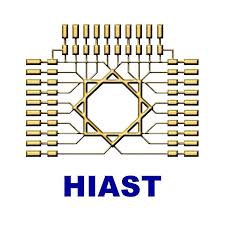اشترك بالحزمة الذهبية واحصل على وصول غير محدود شمرا أكاديميا
تسجيل مستخدم جديدTwo-particle correlations in azimuthal angle and pseudorapidity in inelastic p+p interactions at the CERN Super Proton Synchrotron
80
0
0.0
(
0
)
اسأل ChatGPT حول البحث

ﻻ يوجد ملخص باللغة العربية
Results on two-particle $DeltaetaDeltaphi$ correlations in inelastic p+p interactions at 20, 31, 40, 80, and 158~GeV/c are presented. The measurements were performed using the large acceptance NA61/SHINE hadron spectrometer at the CERN Super Proton Synchrotron. The data show structures which can be attributed mainly to effects of resonance decays, momentum conservation, and quantum statistics. The results are compared with the EPOS and UrQMD models.
قيم البحث
اقرأ أيضاً
A measurement of charged hadron pair correlations in two-dimensional $DeltaetaDeltaphi$ space is presented. The analysis is based on total 30 million central Be+Be collisions observed in the NA61/SHINE detector at the CERN SPS for incident beam momen
ta of 19$A$, 30$A$, 40$A$, 75$A$, and 150$A$ GeV/$c$. Measurements were carried out for unlike-sign and like-sign charge hadron pairs independently. The $C(Deltaeta,Deltaphi)$ correlation functions were compared with results from a similar analysis on p+p interactions at similar beam momenta per nucleon. General trends of the back-to-back correlations are similar in central Be+Be collisions and p+p interactions, but are suppressed in magnitude due to the increased combinatorial background. Predictions from the EPOS and UrQMD models are compared to the measurements. Evolution of an enhancement around $(Deltaeta,Deltaphi) = (0,0)$ with incident energy is observed in central Be+Be collisions. It is not predicted by both models and almost non-existing in proton-proton collisions at the same momentum per nucleon.
Measurements of multiplicity fluctuations of identified hadrons produced in inelastic p+p interactions at 31, 40, 80, and 158~GeVc beam momentum are presented. Three different measures of multiplicity fluctuations are used: the scaled variance $omega
$ and strongly intensive measures $Sigma$ and $Delta$. These fluctuation measures involve second and first moments of joint multiplicity distributions. Data analysis is performed using the Identity method which corrects for incomplete particle identification. Strongly intensive quantities are calculated in order to allow for a direct comparison to corresponding results on nucleus-nucleus collisions. The results for different hadron types are shown as a function of collision energy. A comparison with predictions of string-resonance Monte-Carlo models: Epos, Smash and Venus, is also presented.
Measurements of multiplicity and transverse momentum fluctuations of charged particles were performed in inelastic p+p interactions at 20, 31, 40, 80 and 158 GeV/c beam momentum. Results for the scaled variance of the multiplicity distribution and fo
r three strongly intensive measures of multiplicity and transverse momentum fluctuations $Delta[P_{T},N]$, $Sigma[P_{T},N]$ and $Phi_{p_T}$ are presented. For the first time the results on fluctuations are fully corrected for experimental biases. The results on multiplicity and transverse momentum fluctuations significantly deviate from expectations for the independent particle production. They also depend on charges of selected hadrons. The string-resonance Monte Carlo models EPOS and UrQMD do not describe the data. The scaled variance of multiplicity fluctuations is significantly higher in inelastic p+p interactions than in central Pb+Pb collisions measured by NA49 at the same energy per nucleon. This is in qualitative disagreement with the predictions of the Wounded Nucleon Model. Within the statistical framework the enhanced multiplicity fluctuations in inelastic p+p interactions can be interpreted as due to event-by-event fluctuations of the fireball energy and/or volume.
Two-particle azimuthal correlations of high-pT hadrons can serve as a probe of interactions of partons with the dense medium produced in high-energy heavy-ion collisions. First NA49 results on such correlations are presented for central and mid-centr
al Pb+Pb collisions at 158A GeV beam energy, for different centrality bins and charge combinations of trigger and associate particles. These results feature a flattened away-side peak in the most central collisions, which is consistent with expectations of the medium-interaction scenario. A comparison with CERES Pb+Au results at the same energy, as well as with PHENIX Au+Au results at the top RHIC energy, is provided.
The kaon to pion ratio $K^+/pi^+$ and the scaled variance $omega^-$ for fluctuations of negatively charged particles are studied within the statistical hadron resonance gas (HRG) model and the Ultra relativistic Quantum Molecular Dynamics (UrQMD) tra
nsport model. The calculations are done for p+p, Be+Be, Ar+Sc, and Pb+Pb collisions at the CERN Super Proton Synchrotron energy range to reveal the system size dependence of hadron production. For the HRG calculations the canonical ensemble is imposed for all conserved charges. In the UrQMD simulations the centrality selection in nucleus-nucleus collisions is done by calculating the forward energy $E_{rm F}$ deposited in the Projectile Spectator Detector, and the acceptance maps of the NA61/SHINE detectors are used. A comparison of the HRG and UrQMD results with the data of the NA61/SHINE Collaboration is done. To understand a difference of the event-by-event fluctuations in p+p and heavy ion collisions the centrality selection procedure in the sample of all inelastic p+p events is proposed and analyzed within the UrQMD simulations.
سجل دخول لتتمكن من نشر تعليقات
التعليقات
جاري جلب التعليقات


سجل دخول لتتمكن من متابعة معايير البحث التي قمت باختيارها


